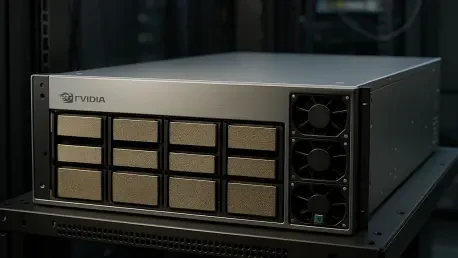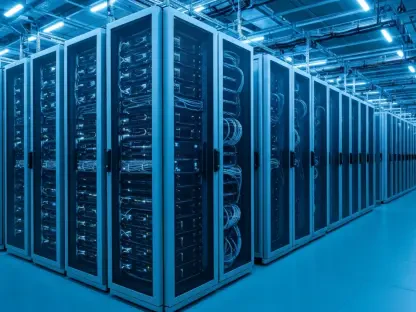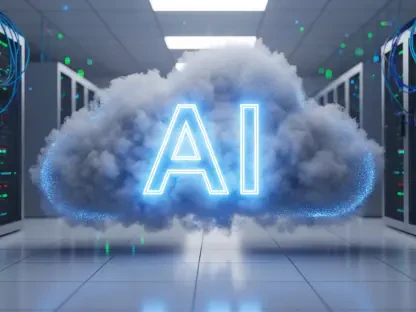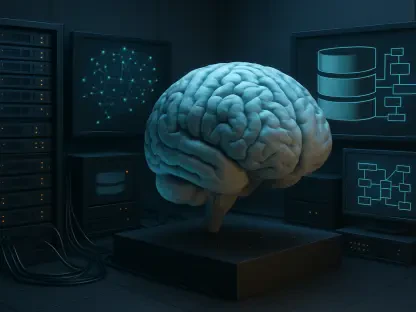In a world where technology evolves at a breakneck pace, Nvidia has once again positioned itself at the forefront of innovation with its groundbreaking announcements at the SIGGRAPH conference in Vancouver. This annual event, a cornerstone for computer graphics and advanced computing professionals, served as the perfect stage for Nvidia to reveal a suite of advancements that promise to reshape industries ranging from enterprise computing to artificial intelligence. The company’s latest offerings span high-performance hardware, sophisticated AI models, and real-world applications that bridge the gap between digital and physical realms. These unveilings are not merely incremental updates but bold strides toward addressing the escalating demands of modern workloads. As businesses and researchers grapple with the challenges of data-intensive tasks and smarter systems, Nvidia’s solutions aim to provide the tools needed to navigate this complex landscape, setting a new benchmark for what’s possible in accelerated computing and AI integration.
Revolutionizing Enterprise Computing with RTX PRO Servers
Nvidia’s introduction of the RTX PRO servers marks a significant leap forward in enterprise-grade hardware, designed to meet the rigorous demands of today’s data-driven world. Powered by the cutting-edge RTX PRO 6000 Blackwell GPU, these servers deliver substantial performance improvements over earlier models like the L40S. They are tailored for critical applications such as AI inference, real-time rendering, and complex data analytics, offering businesses a robust platform to handle intensive workloads. Collaborations with industry giants like Dell, Cisco, HPE, Lenovo, and Supermicro ensure that these systems are seamlessly integrated into existing infrastructures. What stands out is the compact design, with configurations like a 2U rack-mounted form factor housing dual GPUs, making high-performance computing accessible even to organizations with space constraints. This strategic focus on scalability and integration underscores Nvidia’s intent to redefine how enterprises approach computational challenges.
Beyond raw power, the RTX PRO servers bring a compelling economic advantage that could sway decision-makers across industries. Nvidia emphasizes significant energy efficiency and cost savings compared to traditional CPU-only systems, promoting a philosophy of “the more you buy, the more you save.” This approach is particularly relevant as companies face mounting pressure to optimize operational costs while scaling their digital capabilities. The servers’ ability to handle diverse tasks—from synthetic data generation to simulation—positions them as a versatile solution for sectors like finance, healthcare, and entertainment, where data processing needs are ever-growing. Moreover, the environmental benefits of reduced power consumption align with global sustainability goals, adding another layer of appeal. By championing GPU-accelerated platforms, Nvidia is not just offering hardware but advocating for a fundamental shift in how enterprises build their technological foundations, potentially setting a new industry standard for performance and efficiency.
Advancing AI Capabilities through Nemotron Models
Nvidia’s commitment to pushing the boundaries of artificial intelligence was evident with the expansion of its Nemotron family, a series of models designed to enhance reasoning and decision-making in AI agents. Two new multimodal data sets were introduced, featuring a hybrid architecture and a configurable thinking budget that allows systems to process information more deeply within set time constraints. The Nemotron Nano 2 stands out for its increased token generation speed and lower reasoning costs, making it an efficient choice for developers aiming to build responsive AI applications. Meanwhile, the Llama Nemotron Super 1.5 leverages Blackwell GPUs to support advanced precision formats, achieving higher throughput for complex tasks. These advancements signal a pivotal step toward agentic AI systems capable of acting autonomously on behalf of users, opening doors to innovations like digital twins that can manage intricate operations across various domains.
The broader implications of the Nemotron models lie in their potential to transform how AI interacts with the world, moving beyond basic responses to sophisticated decision-making. By focusing on deeper cognitive processing, Nvidia addresses a critical need for AI that can tackle nuanced challenges in real-time, whether in customer service bots, predictive analytics, or automated workflows. Accessibility is another key factor, as these models will soon be available for download through platforms like Hugging Face, alongside Nvidia’s own channels, ensuring that developers and researchers worldwide can experiment and build upon this technology. This democratization of advanced AI tools reflects a strategic vision to foster a collaborative ecosystem where innovation isn’t confined to a select few. As industries increasingly rely on AI for competitive advantage, Nvidia’s efforts to refine reasoning capabilities could redefine the benchmarks for intelligence in automated systems, paving the way for more intuitive and impactful applications.
Bridging Digital and Physical Realms with Metropolis Updates
Nvidia’s vision for AI extends far beyond software, as demonstrated by significant updates to its Metropolis platform, a vision AI framework aimed at real-world applications. This platform targets diverse sectors such as smart cities, industrial processes, and public safety, focusing on enabling safer human-robot interactions and building intelligent infrastructure. Key enhancements include Cosmos Reason, a 7-billion-parameter vision-language model for contextual video understanding and event reasoning, deployable across edge-to-cloud environments for tasks like traffic monitoring and visual inspections. Additionally, tools like VSS Blueprint 2.4 integrate generative AI capabilities into vision applications, offering flexible APIs for tailored smart infrastructure solutions. These updates highlight Nvidia’s ambition to make AI a tangible force in everyday environments, addressing practical challenges with cutting-edge technology.
Complementing these software advancements is robust hardware support, ensuring that Metropolis applications run seamlessly on Nvidia’s latest systems, including RTX Pro 6000 Blackwell GPUs, DGX Spark, and Jetson Thor. The inclusion of Isaac Sim Extensions further accelerates development by simulating human-robot interactions and generating datasets for training vision-language models, reducing the time needed to bring solutions to market. Meanwhile, Nvidia TAO 6.0 offers customization through fine-tuning pretrained models with specific data, catering to unique organizational needs. The accessibility of these tools, available for download, reinforces Nvidia’s commitment to empowering a wide range of users, from urban planners to industrial engineers. By integrating AI into physical spaces, Nvidia is not only enhancing safety and efficiency but also laying the groundwork for smarter, more connected communities, demonstrating the transformative potential of vision AI in shaping the future of public and private sectors.
Shaping Tomorrow’s Technology Landscape
Reflecting on Nvidia’s showcase at the SIGGRAPH conference in Vancouver, it’s evident that the company made a profound impact on the trajectory of computing and artificial intelligence. The unveiling of RTX PRO servers demonstrated a mastery of enterprise hardware, delivering unmatched performance and efficiency that could redefine business operations. Simultaneously, the advancements in Nemotron models marked a significant step toward smarter, more autonomous AI systems, while the Metropolis updates bridged the gap between digital innovation and physical application, enhancing safety and intelligence in real-world settings. These milestones underscored Nvidia’s role as a catalyst for change in an increasingly tech-dependent world. Looking ahead, stakeholders across industries are encouraged to explore how these technologies can be integrated into their strategies, whether by adopting GPU-accelerated systems for cost savings or leveraging AI tools for smarter decision-making. Nvidia’s contributions set a compelling foundation for future innovation, urging a proactive approach to harnessing these advancements for sustainable growth and societal benefit.









